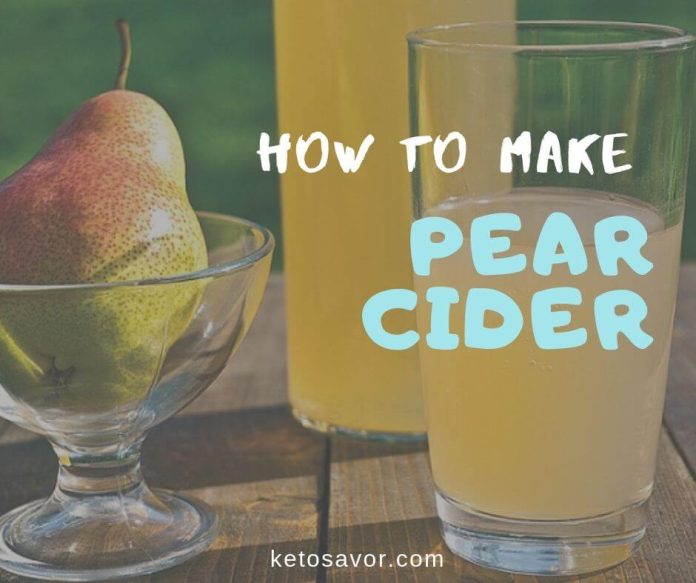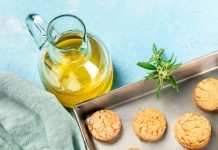First of all, let us tell you few words about ciders. There are two kinds of cider. First one is traditional American cider, made with big cider press (you can buy it, rent it, or make it by yourself), which is a low alcoholic drink made of the fermented juice of apples or pears, known as hard cider.
This kind of cider is popular worldwide. On the other side we have a cider made of fruits and sugar only, and it’s sweet or soft American cider, which is known mainly in America and Canada.
There are multiple ways to make each one of them, and we are going to show you the easiest path to delicious cider on your table.
Table of Contents
American Soft Cider

This recipe is the easiest one to make. Before you start making cider, make sure you have these items prepared:
• Double layer cheesecloth
• Strainer
• One small pot
• One large stock pot
Once you’ve collected the necessary tools for this process, you can move to a fun part – picking the perfect pears for your delicious drink.
The best choice would be the Perry pear from your own pear tree from the yard, but if you don’t have one, it doesn’t matter, you can make cider from whatever pears you can find. You can always use pears from a nearby grocery store. Late season pears or even windfall pears are best for this cider because they contain more sugar.
Ingredients:
• About ten pears
• ½ cup brown sugar
• Water
Optional:
• Three cinnamon sticks
• Two teaspoon ground allspice
• One teaspoon whole cloves
• One vanilla bean pod, split open
Directions:
Wash the pears and cut them in half. Remove stems and seeds. After you’ve done that, mix all ingredients in a large stockpot and cover them with water. Water should be about 2-3 inches above the pears. When you bring mixture to the boil, reduce it to simmer. Cook the pears uncovered for one hour on medium-high heat with occasional mixing.
After an hour, the pears are going to be soft, so you can mash them, as they will just fall apart anyway. Cover the pot, and let it simmer for additional two hours.
Let the mixture sit for a while and slightly cool. Put the strainer over a small pot, and strain the mixture through a fine-mesh sieve to remove solids. Use a cheesecloth to strain the mix one more time for better results before serving. Strain can take a while, so feel free to use your hands or a spoon while squeezing the juice.
Serve cider warm with cinnamon sticks and pear crisps. Pour the rest of the cider into sterilized bottles and store it in the fridge for no longer than a couple of days.
American Hard Cider

Making a traditional American cider is a bit more complicated than making a soft cider. It takes more time, ingredients, and a special equipment, so it might seem challenging, but let’s take this recipe step by step, so we can make it super easy.
Step 1 – Tools And Ingredients
There are several ways to pulp and crush your fruit. If you are making a smaller quantity of cider, you can use a regular blender. But, since we don’t want to turn fruits in puree, we recommend you to use a fruit crusher and press. If you want to make this process completely DIY, you can make your own fruit scatter and fruit press, or you can just buy or rent it. Also, for this process, you will need homebrew equipment, which includes:
• 1-gallon carboys
• Siphon hose
• Airlock
• Funnel
• Fermentation bucket
• Bottles
• Bungs
If you don’t have all required tools, it’s ok, you can find them here. As for ingredients, you’ll need a little more, than just pears and sugar:
• 18-20 pounds of fresh pears
• 1 Camden tablet per gallon (for sterilizing)
• one teaspoon Cuvee Active Dry Wine Yeast per gallon
• one teaspoon of Pectic Enzyme per gallon (optional)
• Sugar
• Water
Step 2 – Preparation Of Fruit And Tools
Get some fresh pears and wash them thoroughly. Cut fruits into small pieces (quarter or less). Clean the outside by removing all the stems and seeds, or any stains or spots. After you’ve done that, your pears are ready for pulping. Use a blender or any of solutions we told you about.
Make sure you have sterilized all the tools and carboy. The safest way to do that is to use your oven. Preheat the oven to 130°C (266°F) and sterilize carboy and bottles for about 20 minutes. Take glassware out of the oven only a few minutes before you are ready to fill them.
Step 3 – Pressing The Fruit
Pears are already pulped, so now you have to extract the juice. Use a press to squeeze juice from pears. Wrap the pulp into cloth, so the pulp stays in place. Otherwise the press will just push it to the sides.
Squeezed juice can be either pasteurized by using heat (the safest method, although it can take away some of the aroma), or sterilized with one Campden tablet per gallon, by letting it set for a day. This process kills all of harmful bacteria that may have been present in the pears.
Step 4 – Fermenting Cider
Funnel the juice into the sterilized carboy. Don’t fill the carboy to the top. Fill only ¾ because, during the process of fermentation, juice can produce a lot of foam, and it can overflow if the container is overfilled.
You can add pectic enzyme to the juice. This ingredient is optional, but it will stop cider from becoming cloudy, and it will give you a clearer cider. At this point, you should add yeast. If you don’t have it, wine or a champagne yeast can be suitable replacements which will give you a higher level of alcohol.
Rehydrate the yeast according to instructions and then add it to the juice in carboys. Put the airlocks on the top of carboys, and leave it to ferment at room temperature. The ideal temperature is between 18° and 22°C (65-75F). Fermentation lasts approximately two weeks. When you stop seeing bubbles on top of the juice, it means that fermentation is done.
Step 5 – After Fermenting
Now the fermentation is done, it’s time to carefully siphon the juice in another carboy, trying not to transfer any of the sediment from the first one. Add ½ cup of simple syrup (equal parts of water and sugar). Fill your cleaned bottles with this mixture and leave them two more weeks to carbonate at room temperature. Cider should stay at least 2-3 weeks at some cool place.
Caution!
Make sure you use appropriate bottles, because the gas that accumulates will pressure them, so eventually they could just burst.
One more tip: If you leave your cider to condition for longer (for about 4-8 weeks, or longer), it will have a better taste when you serve it.
Verdict
So, there you have it! A perfectly fine homemade pear cider. The easy cider recipe, and the traditional one. Whichever you decided to make, we hope we helped you with the process. Now sit back, relax, pour yourself a glass of this tasty drink, and enjoy in your own little achievement.




